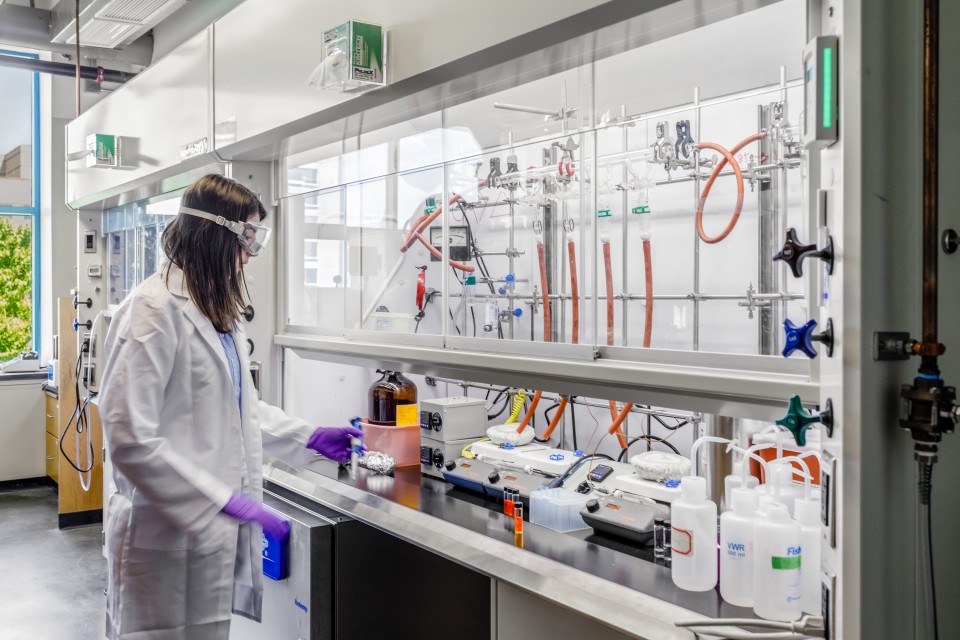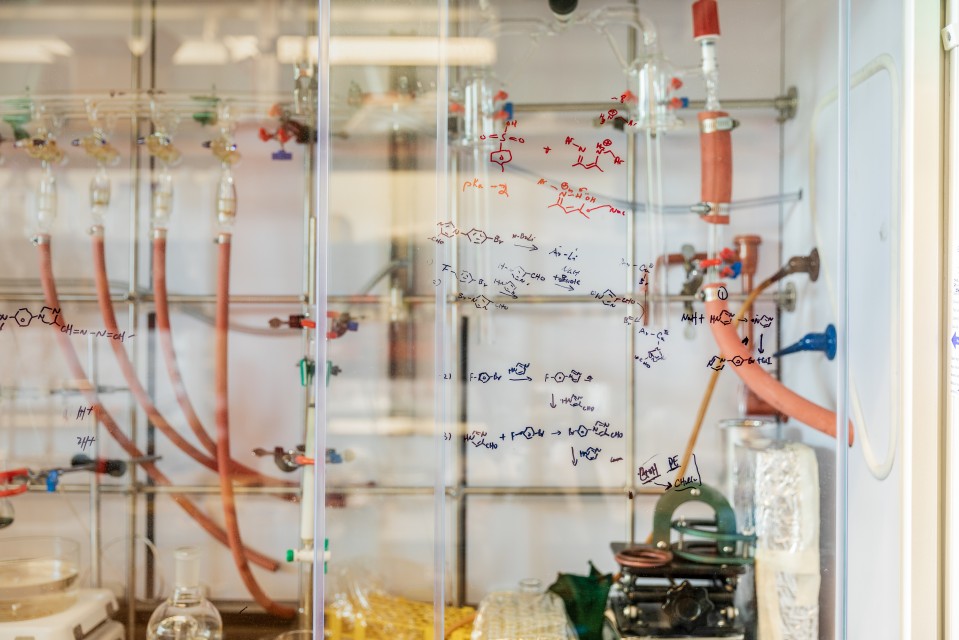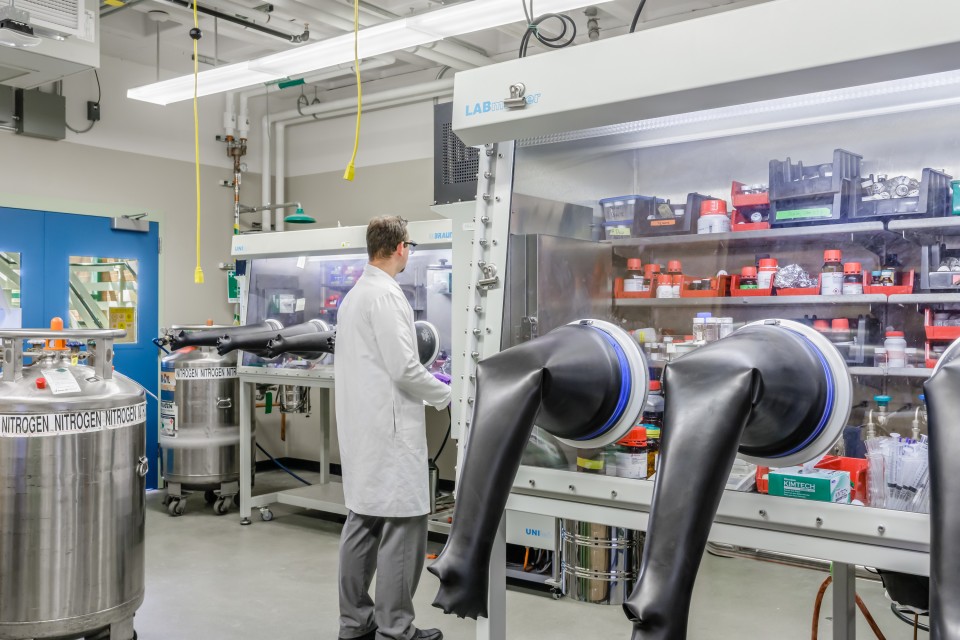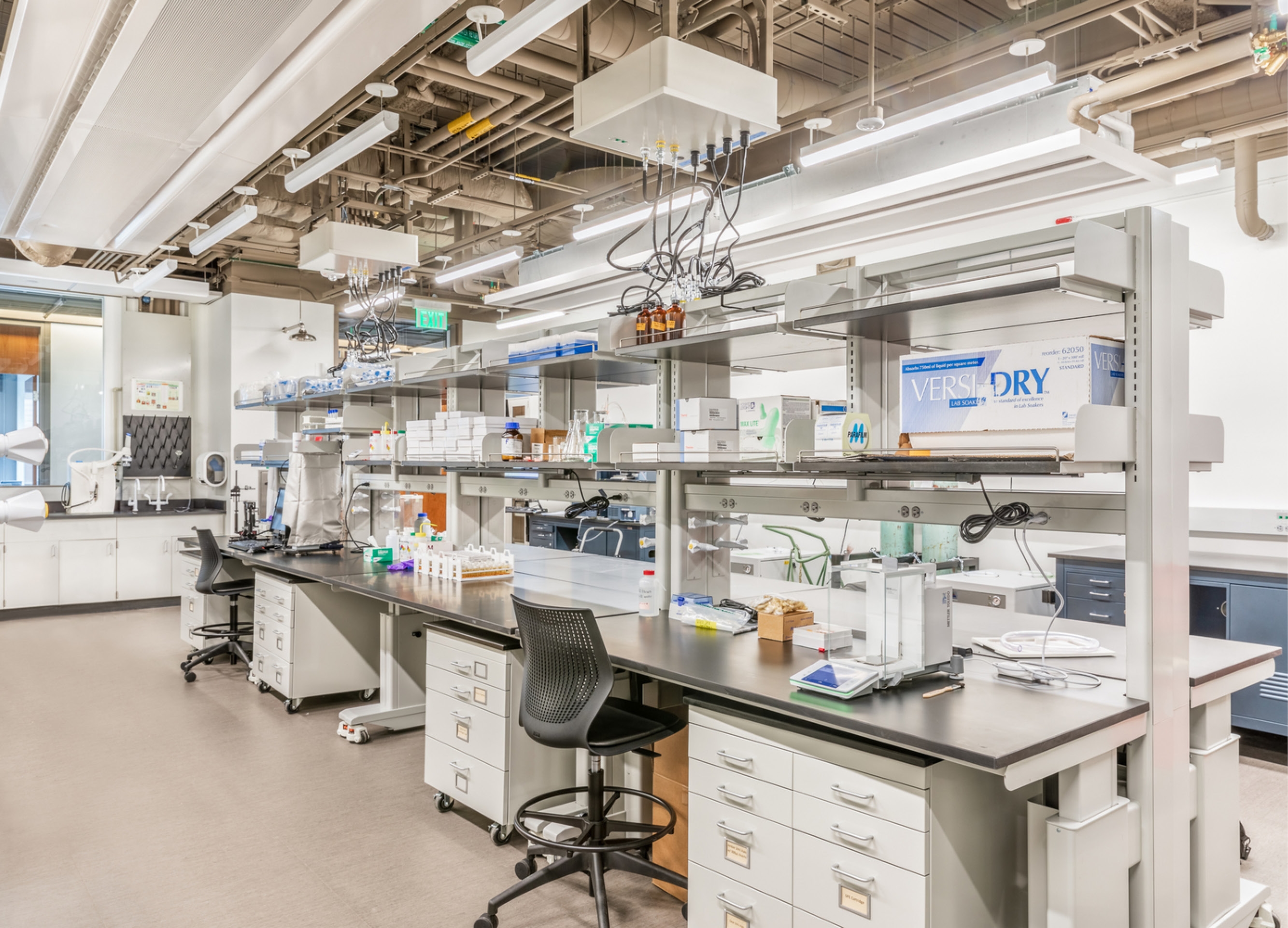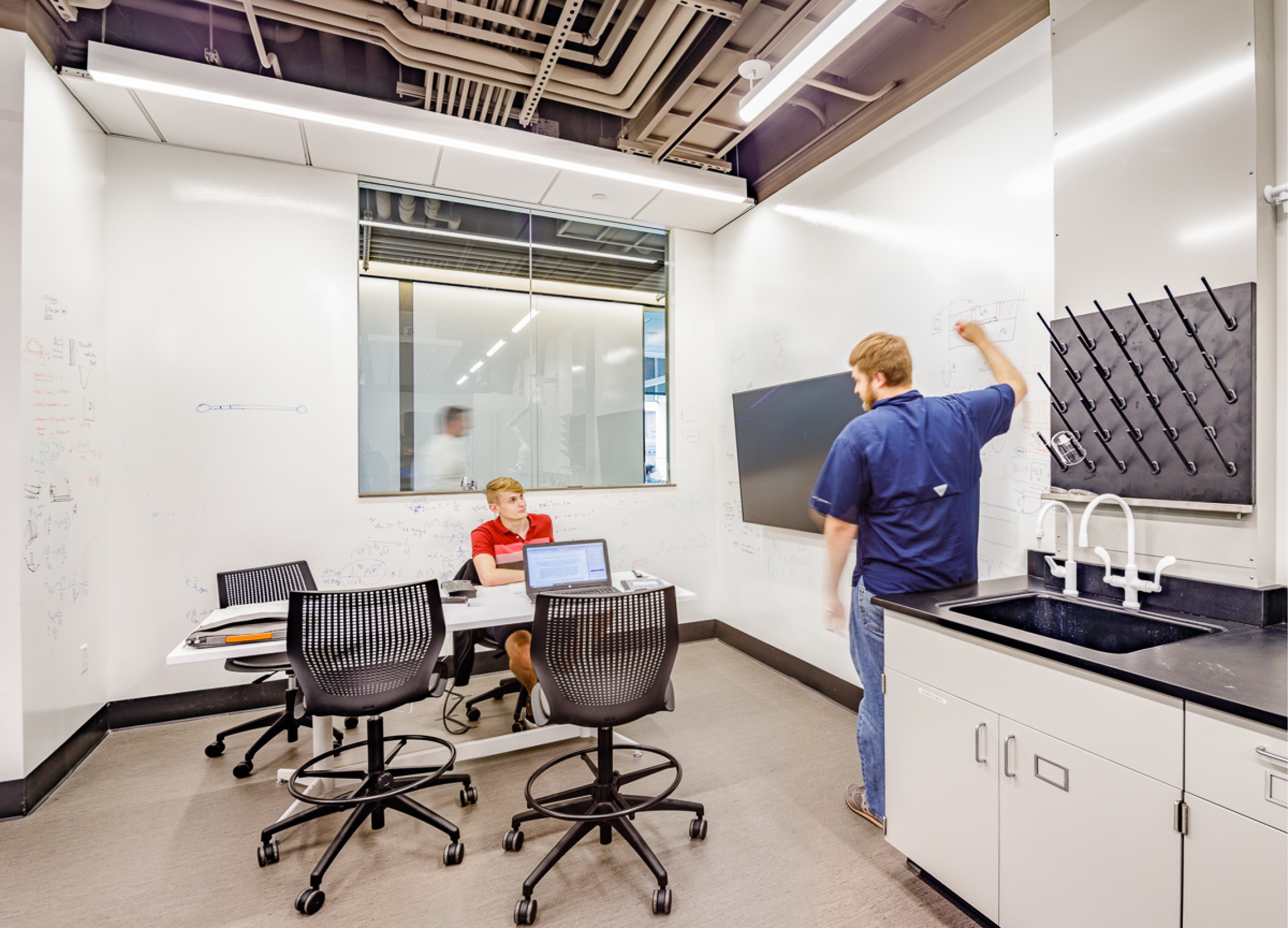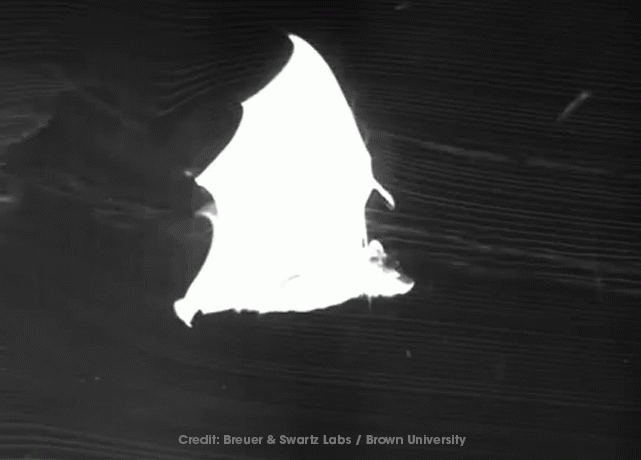Geology and Chemistry Building
Built in 1982, Brown’s Geology and Chemistry Building is home to the Department of Earth, Environmental, and Planetary Sciences (DEEPS) and the Department of Chemistry. Dubbed GeoChem, the project focuses on upgrading the building’s mechanical infrastructure, fire protection/life safety systems, exterior envelope, and accessibility. It required renovations for nine geology labs and 18 chemistry labs to modernize and increase energy efficiency, as well as replacing the existing air handling equipment, chiller, and upgrading all equipment to direct digital controls. Through the creation of four hazardous occupancy rooms, supporting building system infrastructure, and the separation of chemical usage by floors into individual control areas, GeoChem was also able to accommodate additional chemical quantities on upper floors to meet current and future research demands.
The project was completed on an 18-month duration and included 10 separate phases, which were developed by project stakeholders to allow the Owner to maintain occupancy of the building during construction. All of this was accomplished by using an Integrated Project Delivery (IPD) contract, meaning that coordination played a key role since day one to ensure that all parties can work smarter and faster.

